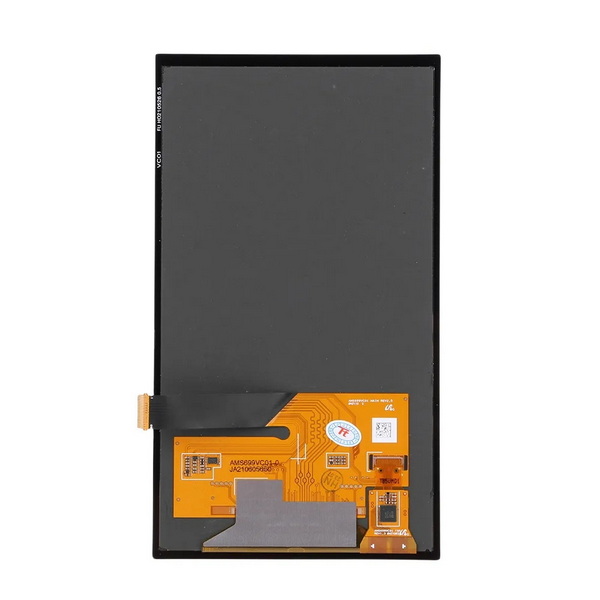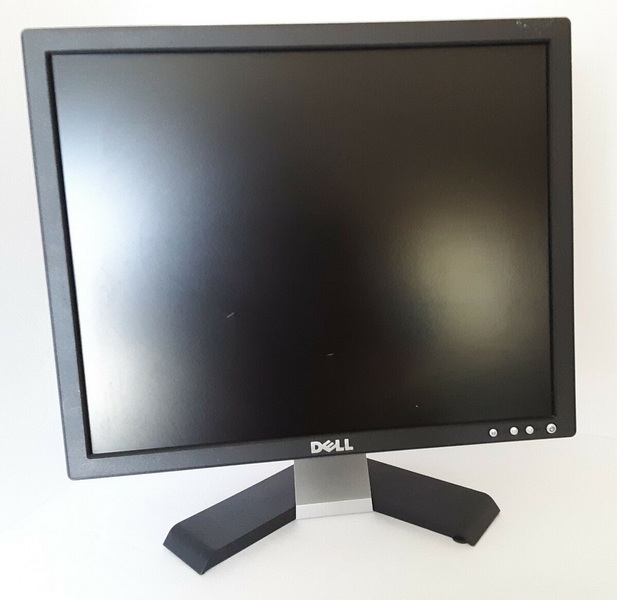- All
- Product Name
- Product Keyword
- Product Model
- Product Summary
- Product Description
- Multi Field Search
Views: 222 Author: Tina Publish Time: 2025-01-24 Origin: Site









Content Menu
● Common Aspect Ratios and Their Uses
● Applications of 6.5x3 Inch Displays
● Advantages of a Unique Aspect Ratio
● Challenges with Non-Standard Aspect Ratios
● Impact of Resolution on Aspect Ratio
● User Interface Design Considerations
● Gaming on a 6.5x3 Inch Display
● Future Trends in Display Technology
● FAQ
>> 1. What is an aspect ratio?
>> 2. How do I calculate the aspect ratio?
>> 3. What are common aspect ratios used today?
>> 4. What are some applications for a 6.5x3 inch display?
>> 5. What challenges might I face with non-standard aspect ratios?
When it comes to displays, the aspect ratio is a critical factor that influences how content is presented. For a 6.5x3 inch LCD display, understanding its aspect ratio can help in various applications, from designing user interfaces to selecting compatible devices. This article will delve into the specifics of the 6.5x3 inch display, its aspect ratio, and its implications for usage.

The aspect ratio of a display is defined as the ratio of its width to its height. It is typically expressed as two numbers separated by a colon (e.g., 16:9). The aspect ratio determines how images and videos are displayed on a screen and can significantly affect user experience.
Understanding where the 6.5x3 aspect ratio fits in can help determine its applications:
- 4:3: Commonly used in older televisions and computer monitors.
- 16:9: The standard for high-definition televisions and most modern displays.
- 21:9: Often used in cinematic displays for a more immersive experience.
The 6.5x3 aspect ratio (or 13:6) falls between these common ratios and may be suitable for specific applications such as portable devices or specialized equipment.
Displays with this aspect ratio can be found in various devices, including:
- Portable Monitors: Ideal for presentations or mobile workstations.
- Embedded Systems: Used in devices like automotive dashboards or control panels.
- Consumer Electronics: Such as digital photo frames or compact gaming consoles.

Having a unique aspect ratio like 13:6 offers several benefits:
- Enhanced Viewing Experience: Wider displays can provide a more engaging experience for multimedia content.
- Better Layout Options: Designers can create layouts that utilize the additional width effectively.
- Portability: Smaller dimensions make it easier to integrate into compact devices.
Despite its advantages, there are challenges associated with using non-standard aspect ratios:
- Compatibility Issues: Some media may not be optimized for this aspect ratio, leading to letterboxing or cropping.
- Limited Content Availability: There may be fewer resources available specifically designed for this display type.
When selecting an LCD display, consider the following factors:
- Purpose: Determine what you will use the display for (gaming, professional work, etc.).
- Content Compatibility: Ensure that your content will display correctly on your chosen aspect ratio.
- Device Integration: Check if your device supports this specific size and resolution.
Another important factor to consider when discussing display characteristics is resolution. The resolution refers to the number of pixels displayed on the screen and is often expressed in terms of width x height (e.g., 1920x1080).
For a 6.5x3 inch display with an approximate aspect ratio of 2.17:1, common resolutions might include:
- 1280x600 pixels: This resolution maintains clarity while fitting well within the unique aspect ratio.
- 1600x750 pixels: A higher resolution option that provides sharper images and better detail.
The choice of resolution affects not only how content appears but also how much information can be displayed at once. Higher resolutions allow for more detail but may require more powerful hardware to drive them effectively.

When designing user interfaces for a display with a unique aspect ratio like 6.5x3 inches, several considerations come into play:
- Layout Design: Designers must think creatively about how to use space effectively. Wider layouts can accommodate more horizontal elements without feeling cramped.
- Text Readability: Ensuring that text remains legible at different sizes is crucial. The wider screen allows for larger text sizes without sacrificing space.
- Interactive Elements: Buttons and other interactive components need to be spaced appropriately to avoid accidental clicks or taps.
Gaming applications can also benefit from this unique aspect ratio. Many modern games are designed with widescreen formats in mind, making a 2.17:1display suitable for immersive gaming experiences.
- Wider Field of View: Players can see more of their surroundings, which enhances gameplay and situational awareness.
- Enhanced Graphics Experience: Games designed for wider screens often have graphics optimized for such displays, providing richer visuals.
However, not all games will automatically adjust to this non-standard aspect ratio:
- Letterboxing: Some games may not support this resolution natively, leading to black bars on either side of the screen.
- Performance Issues: Depending on the hardware used to drive the display, performance may vary when rendering at non-standard resolutions.
As technology continues to evolve, we see trends toward more diverse display sizes and resolutions. Manufacturers are increasingly catering to niche markets that require specific dimensions and aspect ratios.
Ultra-wide displays have gained popularity due to their immersive nature. While they typically fall under wider ratios like 21:9, smaller ratios like 2.17:1could find their place in specialized applications where portability is essential without sacrificing too much screen real estate.
The advent of flexible display technology opens new possibilities for unconventional form factors. A flexible LCD could potentially adapt its shape and size based on user needs while maintaining an optimal viewing experience across various applications.
Understanding the aspect ratio of a 6.5x3 inch LCD display is essential for maximizing its potential in various applications. With an approximate aspect ratio of 2.17:1, this display offers unique advantages while also presenting some challenges in terms of content compatibility.
In conclusion, whether you are designing an interface or choosing components for a project, knowing how to work with different aspect ratios will enhance your overall experience and effectiveness.

- An aspect ratio is the relationship between the width and height of a display, expressed as two numbers separated by a colon.
- You can calculate it by dividing the width by the height (e.g., $$ \frac{6.5}{3} = \frac{13}{6} $$).
- Common ratios include 4:3, 16:9, and 21:9.
- Applications include portable monitors, embedded systems, and consumer electronics like digital photo frames.
- Challenges include compatibility issues with media and limited content availability optimized for that specific ratio.
This comprehensive article answers the question "Can I Upgrade My E-Bike LCD Display Easily?" by exploring display types, compatibility, practical upgrade steps, troubleshooting, and maintenance tips. Boost your riding experience and get the most from your LCD display e-bike with the best current advice, illustrations, and video guidance.
This comprehensive guide explores the troubleshooting and repair of backpack LCD display issues, covering blank screens, flickers, garbled text, address conflicts, and more. It offers stepwise solutions and practical videos to help users swiftly restore functionality in their hardware projects.
Discover why the Sharp memory LCD display outperforms traditional LCDs with lower power use, unmatched sunlight readability, robust reliability, and a straightforward interface. Learn about its technology, applications, pros and cons, integration tips, and get answers to common engineering questions.
OLED displays, though admired for their visuals, may cause digital eye strain or "OLED screen eye tire" during extended use because of blue light, potential PWM flicker, and intense color/contrast. By using optimal settings and healthy habits, users can safely enjoy OLED with minimal discomfort.
Does displaying a white screen on an LG OLED TV fix persistent burn-in? The answer is no: true burn-in results from irreversible pixel wear and chemical aging. The best practice is to use preventive features, moderate settings, and varied content to safeguard screen health. For severe cases, panel replacement is the only cure.
An in-depth guide to the LCD display bezel: its definition, history, materials, structure, and growing role in display design. Explores bezel importance, types, aesthetic trends, maintenance, and innovation, offering expert insights—including an expanded FAQ and practical visuals—to help users understand its unique place in technology.
This article provides a complete, practical guide to diagnosing and fixing non-responsive SPI LCD displays using methods including hardware validation, logic level correction, library configuration, and advanced diagnostic tools. Perfect for hobbyists and engineers alike.
LCD display liquid coolers deliver top-tier performance with visually stunning customizable LCD panels that display system data and artwork. They suit enthusiasts and streamers aiming for unique builds but may be unnecessary for budget or basic systems. The price premium is justified by advanced hardware, software, and customization features.
Black bars on an OLED screen do not cause burn-in as those pixels are switched off. Only with excessive, repetitive content does minor uneven aging become possible. Varying viewing habits and enabling panel maintenance prevents problems in daily use.
OLED TVs provide spectacular picture quality but rely heavily on the quality of the video input. Most cable broadcasts are limited to lower resolutions and compressed formats, so an OLED screen connected to a regular cable box will look better than older TVs but may not realize its full potential. Upgrading cable boxes and utilizing streaming services can unlock the best OLED experience.
OLED screen burn-in remains one of the key challenges inherent in this display technology. While no universal fix exists for permanent burn-in, a blend of app-based tools, manufacturer features, and maintenance practices can help reduce appearance and delay onset. Proper prevention strategies and use of built-in pixel shift and refresher tools offer the best chances of avoiding this issue.
This article comprehensively explores will OLED screen burn in over time by explaining the science of OLED displays, causes and types of burn in, manufacturer solutions, prevention tips, and real-world user experiences. Burn in risk does exist, but modern panels and user habits greatly reduce its likelihood, making OLED an excellent and long-lasting display choice.
This article provides an in-depth guide to selecting the best LCD display driver IC for various applications, covering driver types, key features, leading manufacturers, integration tips, and practical examples. It includes diagrams and videos to help engineers and hobbyists make informed decisions about LCD display driver selection.
Dead pixels are a common type of LCD display defect, caused by manufacturing faults, physical damage, or environmental factors. While stuck pixels may be fixable, dead pixels are usually permanent. Proper care and understanding can help prevent and address these issues.
This comprehensive guide explains every symbol and function found on e-bike LCD displays, using clear explanations and practical tips. Learn to interpret battery, speed, PAS, error codes, and customize settings using your e-bike LCD display manual for a safer, smarter ride.
This comprehensive guide explains how to set an LCD display clock, covering everything from hardware setup and wiring to coding, troubleshooting, and creative customization. With detailed instructions and practical tips, you'll learn to confidently build and personalize your own LCD display clock for any setting.
This article explores whether OLED laptop screens are prone to burn-in, examining the science, real-world evidence, prevention methods, and lifespan. It provides practical advice and answers common questions to help users make informed decisions about OLED technology.
Displaying a black screen on an OLED TV will not cause burn-in, as the pixels are turned off and not subject to wear. Burn-in is caused by static, bright images over time. With proper care and built-in features, OLED TVs are reliable and offer exceptional picture quality.
This article explores the causes of OLED screen burn-in, the science behind it, and effective prevention strategies. It covers signs, effects, and potential fixes, with practical tips to prolong your OLED display's lifespan and answers to common questions about burn-in.
OLED screens deliver unmatched image quality, with perfect blacks, vivid colors, and ultra-fast response times. Despite higher costs and some risk of burn-in, their advantages make them the top choice for premium displays in TVs, smartphones, and monitors.